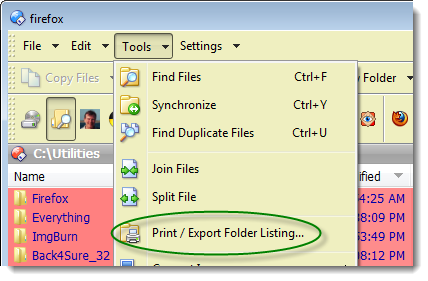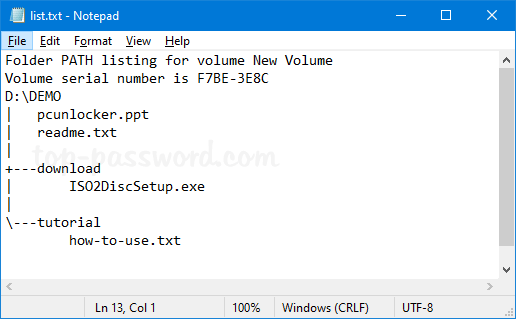Export Folder Structure To Text File
- Export File Directory List
- File List Export
- Export Folder Structure To Text Files
- Export Folder Contents To Text
- Export Folder Structure To Text File Converter
From File, and choose From Folder (as shown below) You then choose the folder that contains the files by browsing to it. When you click OK, it will show you the list of files in the folder. You will note that it has listed all the folder information including the path. If you transfer your file from Unix to Windows, and use a program which cannot understand this such as notepad, then the program sees LF and thinks, thats not a line ending I will ignore it. If you want further help, tell us how your exporting - which os as wel, which os your opening on, how your transferring, and what application to open it. Where /F is to list the files in addition to each folder, and /A is to output the structure to a text file. So we will be using both the switches to export the data. Now open File Explorer, navigate to the folder you want to export its structure. In my case, it’s “c: drivers”. Then, type the following command in the address bar in File. If you are trying to copy the OST folder structure to OST you can do that by converting the OST to PST using Remo OST to PST converter. Manual Method 2: Open Outlook, and go to File - Import and Export; Select Export to a file option, and hit Next; Select Personal Folder File (.pst), and click Next. Thanks for the quick response but I like the format that -recursive provides so I have one line for each folder and subfolder combination that can be exported to a file. This Get-ChildItem c: windows.directory does provide the results but would be too difficult to work with in a file.
Export Windows folder filenames to a text file using Command Line
Scenario: You have a Windows folder containing a large amount of files that you need to have exported into one text file listing all the filenames. For instance, you might need to copy & paste those filenames into an Excel spreadsheet.

Here’s a quick and easy way to do it:
1. Open a Command Window (Start > Run > cmd)
2. Navigate to the folder by using the cd command. If you need to move up a level, use cd . If your folder name contains spaces, surround it with quotations.
Export File Directory List

Commands to type
File List Export
3. Type the command dir /b>filelist.txtThe long dark emergency stim.
4. This will create the text file inside that folder. If you want the file output elsewhere, use a fully qualified name. Remember that Windows uses as the directory delimiter, not /

Export Folder Structure To Text Files

Export Folder Contents To Text

Export Folder Structure To Text File Converter
The “pretty” alternative: Simply drag and drop the folder into a Mozilla (Firefox) browser. The directory structure will be output in a pretty HTML document.



